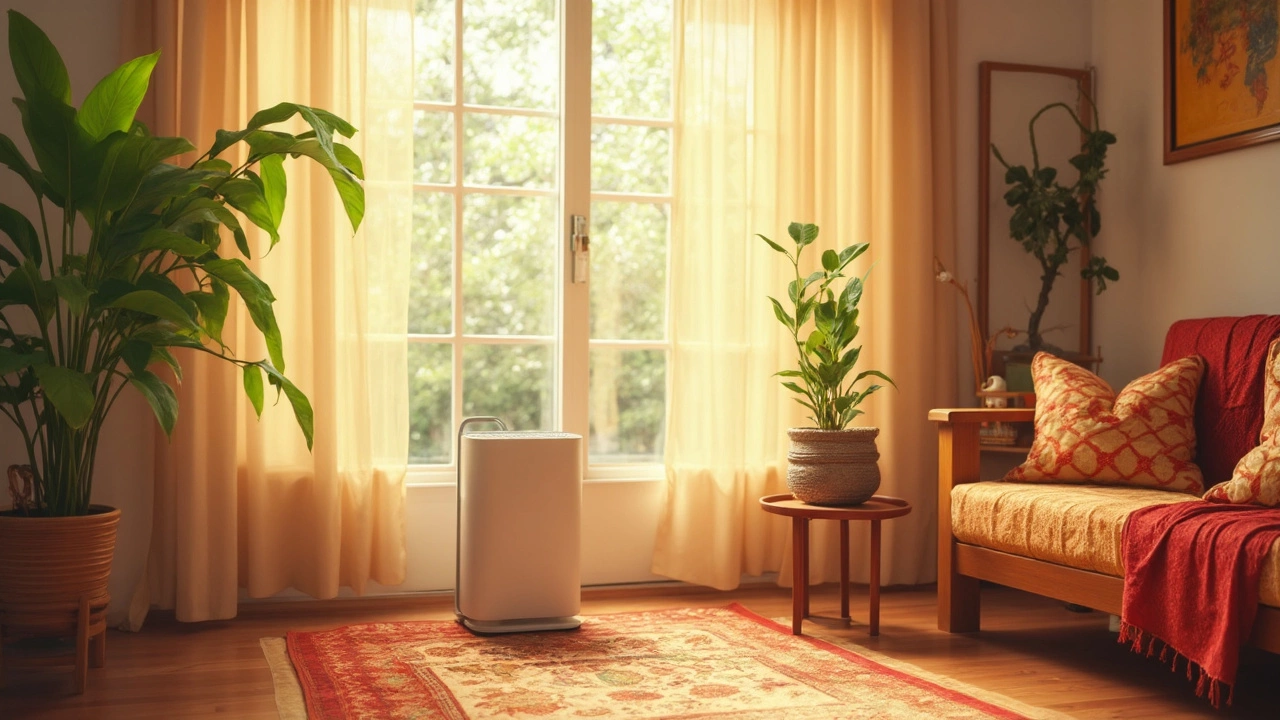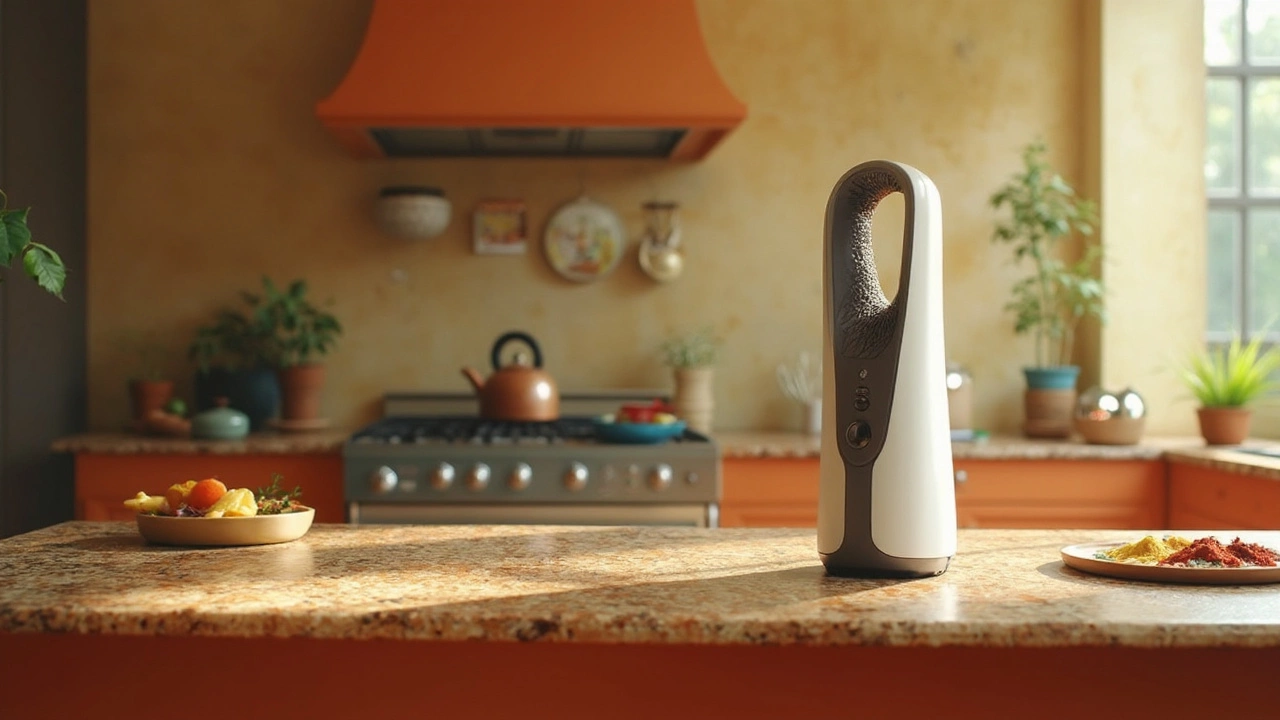
You know that feeling when the air just doesn't feel quite right? Maybe it's too stuffy in your living room or there's a lingering smell in the kitchen. That's where an air purifier comes into play! But before you go all in and plop it down in any room, let's talk about where it really belongs.
Sure, you might think, 'Why does it matter? It's cleaning the air, right?' Well, air purifiers work best when placed strategically. The right room can make a big difference in ensuring that you're getting the fresh air you're after. So, let's figure out which room in your house deserves this magical device. And trust me, your lungs will thank you.
- Choosing the Right Room
- Size and Scope Considerations
- Common Air Quality Concerns
- Optimal Placement Tips
- Frequently Asked Questions
Choosing the Right Room
So, you've got a shiny new air purifier, and you're itching to put it to work. But where should it go? It's tempting to drop it in the most crowded room, but that's not always the best move. Let's get into the nitty-gritty of picking the best spot.
The first thing to consider is where you and your family spend most of your time. For many, that's the living room. If you're hanging out there a lot, it makes sense to have fresh, clean air circulating. Next up is the bedroom. A good night's sleep can be thrown off by poor air quality, so it's worth considering placing your air purifier there.
Don't forget about the kitchen, especially if you're the adventurous type who loves spicy foods or trying out new recipes. Cooking can release all kinds of particles and odors, making this room a solid candidate for some purification action.
If you're working from home, think about sticking it in your office. Sitting in a small space for hours on end can make things feel stuffy fast. And if you or someone in your house struggles with allergies, the bedroom might take priority to keep those nighttime sneezes at bay.
- Living Room: Great if it's your main hangout space, ensuring everyone's breathing easy.
- Bedroom: Perfect for clean air all night long and reducing allergens and dust.
- Kitchen: Ideal if cooking tends to leave lingering smells or smoke.
- Home Office: Keeps your work environment fresh and free of pollutants, helping with concentration.
Choosing the right room isn't just about where you hang out. Consider the room size too. A small room with a powerful purifier can be overkill, while a large open space with a tiny purifier might not do the trick. Also, think about existing allergens in each space, like pet dander in the living room or dust in the bedroom.
Size and Scope Considerations
Alright, so you've got your shiny new air purifier. But hold up, before you stick it anywhere, let's think about the size of the room and the power of that purifier. Believe it or not, these little factors can really affect how well it works.
First, check out your air purifier's CADR (Clean Air Delivery Rate). This tells you how fast it can purify the air in a particular size space. Most of the time, you'll find a handy chart or guide that tells you the best room size for your machine. If your purifier is small, it might be perfect for a bedroom or office, but probably not great for a big open living space.
Here's a quick cheat sheet: a CADR of around 60-150 is good for smaller rooms like bedrooms or home offices, while a CADR of 250+ is better for larger spaces like living rooms. So if you're thinking of a living room or a space where you hang out a lot, make sure your purifier can handle it.
Also, think about how often you're going to use the purifier in each room. If your living room sees a lot of foot traffic and funky smells, maybe it's time to consider placing your air purifier there instead of that quiet corner of your guest room.
| Room Size (sq ft) | Recommended CADR |
|---|---|
| 100-150 | 60-100 |
| 200-300 | 150-250 |
| 400+ | 250+ |
Picking the right room with consideration for where the purifier's strengths match your needs is key. Don't just guess and hope for the best. With the right air purifier placement, you're looking at fresher and cleaner air in no time.

Common Air Quality Concerns
Ever wondered what exactly lurks in the air you breathe daily? It’s not just clean oxygen, that's for sure. When it comes to air quality, lots of things can go wrong, especially indoors. Let’s break down what you should be concerned about.
First off, we have dust and pollen—those tiny particles that make you sneeze and your eyes itch. While dust is a year-round buddy, pollen tends to hit you hard during spring. Next up, smoke and odors are another biggie, whether from cooking, candles, or the occasional cigarette. If you have pets, pet dander is a likely culprit causing all sorts of allergic reactions.
Another concern is volatile organic compounds (VOCs). These pesky chemicals come from common household items like paint, cleaning products, and furniture. VOCs might not be immediately obvious, but they can impact air quality significantly.
Air purifier placement is crucial since these pollutants can be more concentrated in certain rooms, like the kitchen or areas with lots of fabric materials.
“Improper indoor air quality is linked to various health concerns, including allergies, and asthma. By reducing indoor air pollutants, we can improve overall health and well-being,” says the EPA.
Good air quality isn't just for comfort; it's a health thing too. Studies show that poor indoor air can lead to respiratory problems and even affect sleep quality. Just think of how restless a night can get when you wake up coughing or with a clogged nose.
So, how can you tell if the air quality in your home isn’t up to par? Keep an eye out for frequent allergy symptoms or lingering odors. Investing in an air purifier can be a total game-changer to help tackle these issues.
Optimal Placement Tips
You’ve got your air purifier, and now it's time to pick the perfect spot. You might be tempted to hide it in a corner or tuck it behind a couch, but that’s not gonna cut it if you really want clean air.
For starters, aim to place your air purifier in the room where you spend the most time. Living rooms or bedrooms are popular choices. But before you set it up, think about a few things:
- Avoid Corners: Cornering your purifier hampers airflow, so keep it out in the open. It needs space to pull in the dusty air and breathe out freshness.
- Off the Ground: Get your purifier off the ground if you can—like a small table or shelf. Most dust and pollen hover a few feet above the floor, so placing it at that level boosts its efficiency.
- Away from Obstacles: Keep it clear of obstacles like furniture, and try not to cramp its style with curtains or walls too close.
- Appropriate Room Size: Match your purifier's capacity with the room size. If it's built for bigger spaces and you stick it in a tiny room, you're not making the most of its capabilities.
Once you're set up, test it out. If after a week you notice a lack of change, maybe it's worth reassessing its spot. Remember, small adjustments can lead to big improvements in air quality at home. And hey, who doesn’t want to breathe easier?

Frequently Asked Questions
Thinking about where to put your air purifier but still have questions? You're not alone! Let's tackle some of the most common queries folks have when setting up their purifier to truly make the most out of it.
1. Can I use one air purifier for the entire house?
It'd be awesome if one purifier could handle every nook and cranny, but usually, each unit is effective for a specified area, measured in square feet. If you've got multiple floors or large open spaces, you might need more than one. Always check the coverage area listed in the specs. It's like trying to fill a big pool with a garden hose—more units mean better coverage!
2. Should the air purifier be running all the time?
For optimal air quality, yes. Running it continuously ensures that it's consistently filtering out dust, allergens, and other particles. Some modern purifiers are super energy-efficient, so keeping them on won't jack up your electricity bill like crazy.
3. Is placing it near the window a good idea?
Putting an air purifier near a window can be a bit tricky. If the window's open, you're inviting in fresh air, but also pollutants. Keeping the purifier close to a window when it's closed can help catch anything sneaky trying to slip in through small gaps.
4. How often should I change the filters?
Filters are the unsung heroes. Depending on the model and air quality, some need changing every 3 to 6 months, while others can last longer. A good trick—mark the date on your calendar when you change it. It’s like remembering to water your plants!
5. Can air purifiers remove viruses?
While air purifiers with HEPA filters can trap tiny particles, they can't eliminate viruses completely. They can, however, reduce the number of airborne germs, making your home a bit safer—especially during flu season. But remember, they're not a replacement for good hygiene practices.